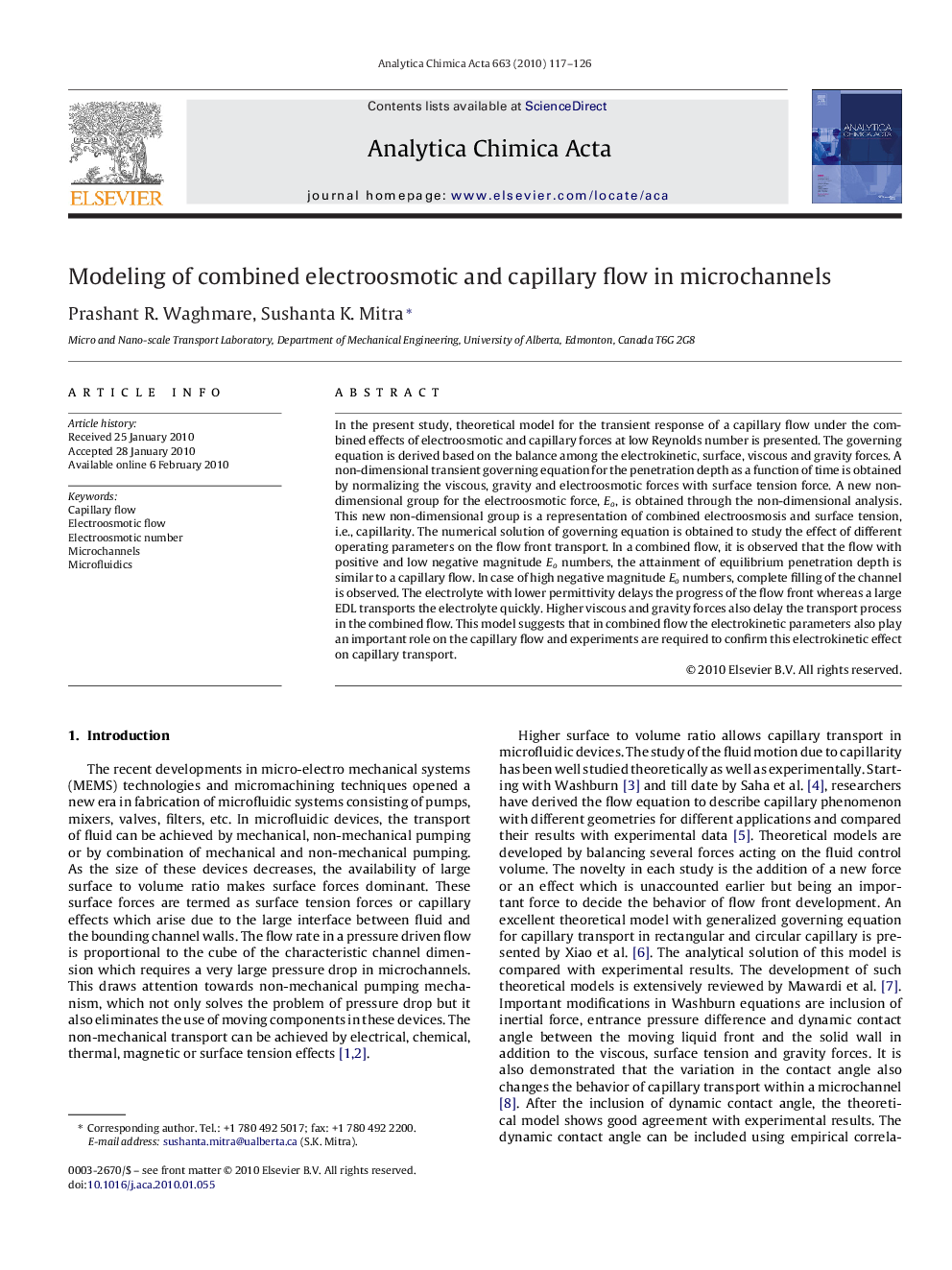| Article ID | Journal | Published Year | Pages | File Type |
|---|---|---|---|---|
| 1167877 | Analytica Chimica Acta | 2010 | 10 Pages |
In the present study, theoretical model for the transient response of a capillary flow under the combined effects of electroosmotic and capillary forces at low Reynolds number is presented. The governing equation is derived based on the balance among the electrokinetic, surface, viscous and gravity forces. A non-dimensional transient governing equation for the penetration depth as a function of time is obtained by normalizing the viscous, gravity and electroosmotic forces with surface tension force. A new non-dimensional group for the electroosmotic force, EoEo, is obtained through the non-dimensional analysis. This new non-dimensional group is a representation of combined electroosmosis and surface tension, i.e., capillarity. The numerical solution of governing equation is obtained to study the effect of different operating parameters on the flow front transport. In a combined flow, it is observed that the flow with positive and low negative magnitude EoEo numbers, the attainment of equilibrium penetration depth is similar to a capillary flow. In case of high negative magnitude EoEo numbers, complete filling of the channel is observed. The electrolyte with lower permittivity delays the progress of the flow front whereas a large EDL transports the electrolyte quickly. Higher viscous and gravity forces also delay the transport process in the combined flow. This model suggests that in combined flow the electrokinetic parameters also play an important role on the capillary flow and experiments are required to confirm this electrokinetic effect on capillary transport.
